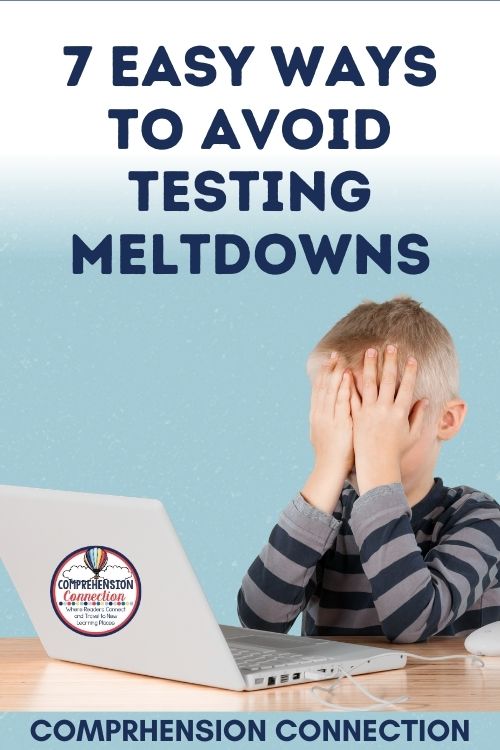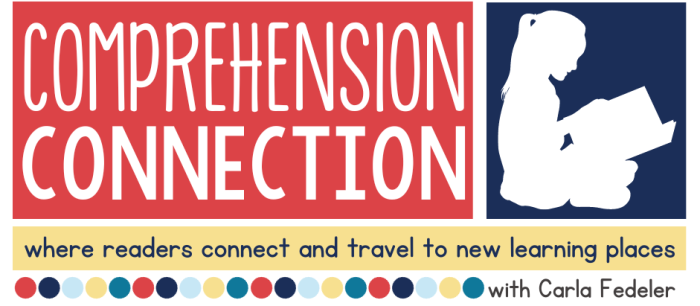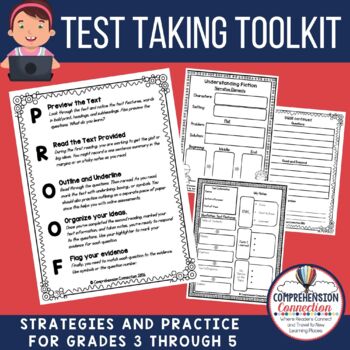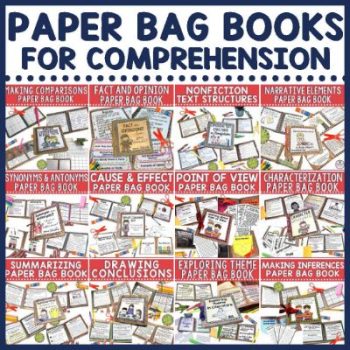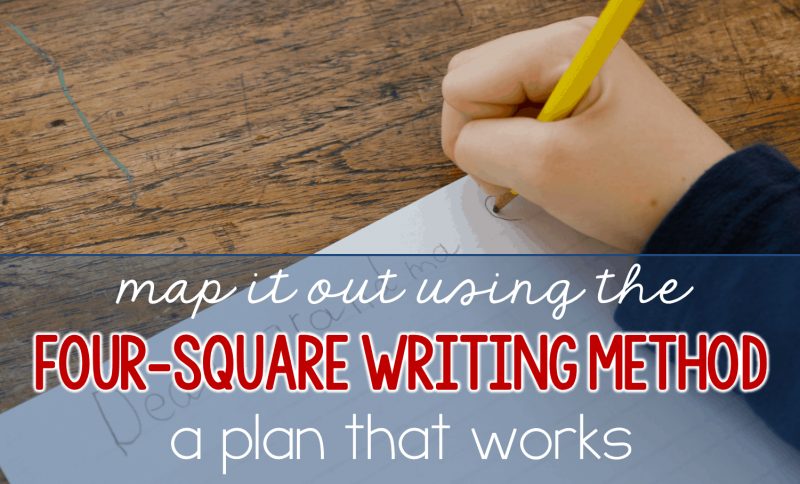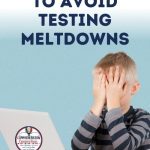
State testing is just around the corner, and the pressure is building. This pressure often leads to student frustration and testing meltdowns. In fact, those testing meltdowns might come from teachers! We had the first of three math inservices today on how to help our students with the dreaded technology enhanced items. Our state has just notified us that the released items are available for us to use to practice. I do not know about you, but just talking about all of this makes my stomach feel a little queasy. Imagine what this means for the kiddos who are 9-10 years old?
Obviously, some practicing helps our students feel confident that, “Hey…I’ve seen this before. I know how to do this.” Too much practice gets boring and can create anxiety, so it’s up to us to find the balance both for students and for ourselves. In this post, I thought I’d share a few tips you might use.
Space Out the Testing Practice Using Spiral Review
One way to know that our students know the content is to continually weave in review so that previously taught material stays fresh in the mind. I am not talking about daily language review, but rather, practice with center games, for partner work, writing assignments, and projects. Tie in research projects that can help your kids keep the ideas “on the front burner”.
Testing tip #2 Positive Attitudes Breed Positive Attitudes
Students have a magical way of sensing when we’re having a bad day don’t they? Likewise, we know very well when they’re having a bad day too. It shows up in their behavior. Kids who get stressed easily struggle to hold it together, and we can get a lot of bang for the buck if we fill them with positive feelings. Look for the information they know, praise that A LOT, and weave in the information they don’t know (yet) into your next lesson.
Get Plenty of Rest and Eat Well on the Days Leading to Testing
Students and teachers can lose a lot of anxiety by getting lots of activity. I won’t get too crazy in listing ideas here as there has been a lot of discussion about brain breaks and Go Noodle. If you look on Pinterest, you can find an endless supply of online movement activities and games. I have a Pinterest board for Brain Breaks which is not very big. You might search for other boards. Teaching Momster is one blogger with a great Pinterest board for brain breaks to look for.
Use Cheat Sheets First Before testing
Many students find it helpful to have a “cheat sheet” to use as a reminder of the important information to remember to do. In math, it might be a formula sheet. In reading, it might be reading vocabulary and the “look fors” associated with each. The students notes might be relaxation tips or reminders to self to ask for a break when needed. After all,once testing starts, we can’t ask or offer this to them.
Reassure Your Students that You’re Confident in Their Abilities with testing
As we get closer to test day, keeping the routine of conversations where we can listen and reassure our students is important. Take time to read to your students books that may provide them with outlet options. One of my favorite counselor authors is Julia Cook, and many of her books are perfect for offering students advice to help them through challenging times whether it’s divorce, bullying, or test anxiety. Here are a few titles that are worth pulling and using.
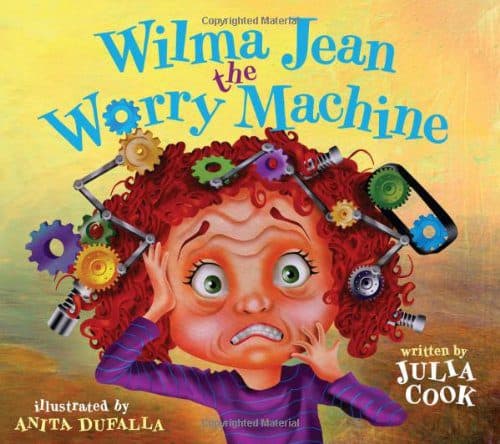
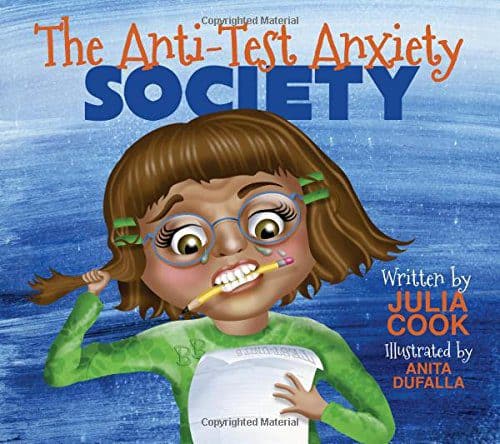
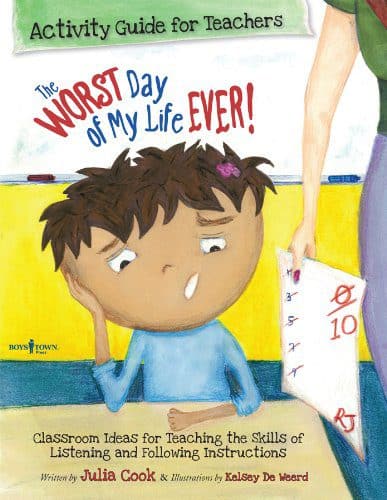
Share Humorous Videos and Jokes about Testing
The last tip I thought I’d share is to keep a sense of humor always. Humor is an amazing medicine that can heal. There are so many humorous animal posters out on Pinterest. Why not have a poster of the day shared on your Smartboard? Let your students create their own humorous posters to help themselves relax. I suspect many art teachers would agree that creating artwork helps the body relax.
Use Inspirational Videos to Prevent Student Frustration
Fun videos and videos with tips can help build confidence and reduce the stress associated with testing. Most are short and can be worked into your regular lessons. I love the last link as I think teaching the kids the rap might help those tips stick! Give them a try.
Final Thoughts:
Best wishes to you as you face the tough days ahead. If you find you’re needing materials for preparing for the reading assessment, the following resources have come in handy with my students. We’ve had great success after using them
-
Sale Product on saleTest Prep Toolkit for Comprehension, Test Taking, Study Skills, State Testing
$10.49Original price was: $10.49.$5.00Current price is: $5.00.
THIS SET (TPT link) may have what you need. It’s $12.00 and includes about 120 pages of materials. I used it with my intervention groups and had great results. It includes anchor charts for each skill, procedural foldables and flipbooks that guide students on how to tackle long passages, close reading materials, question stem cards, word work materials for context clues, synonyms/antonyms, text structures materials, and more.
Another bundle I’d highly recommend for afterschool remediation, remediation by skill or RTI is my Paperbag Book Bundle for Comprehension (TPT link). It too includes anchor chart pages for introduction and modeling of each skill, practice activities for guided practice, and application for independent work. Skill include:
Fact and Opinion
Cause and Effect
Synonyms and Antonyms
Making Inferences
Drawing Conclusions
Main Idea
Theme
Nonfiction Text Structures
Nonfiction Text Features
Point of View
Narrative Elements
Characterization
Summarizing
-
Sale Product on saleComprehension Projects Bundle, Paper Bag Books, Test Prep, Intervention
$64.00Original price was: $64.00.$35.00Current price is: $35.00.
To learn more about this resource, you can view each of the paper bag book resources by clicking the skill you’re interested in. The bundle includes all 13 books listed. You get 13 for the price of 8.
Related Posts:
- A Five Step Program for Taming the Test Taking Monster
- Your Students Have Finished End of the Year Testing! Now What?

